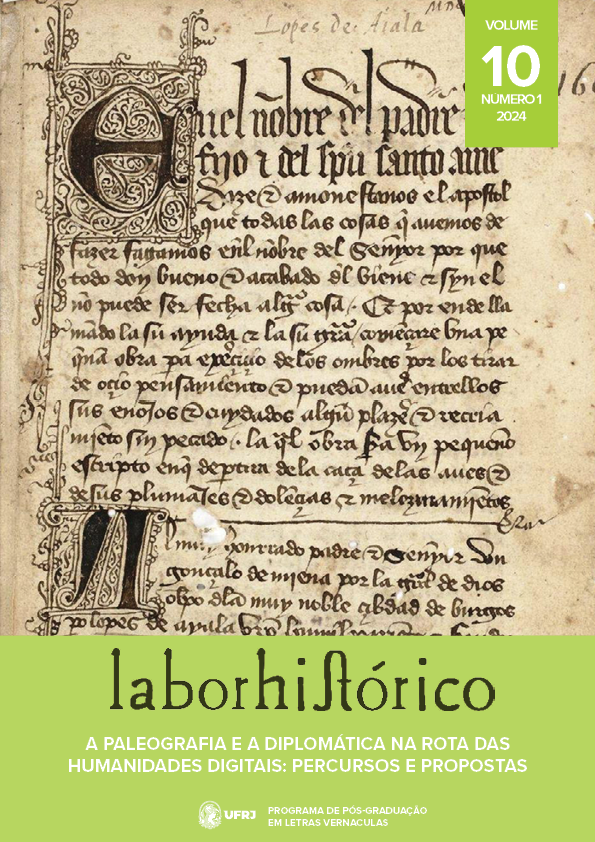Imago as political identity: The Royal Seals of the Kingdom of Portugal
DOI:
https://doi.org/10.24206/lh.v10i1.63287Keywords:
Sigillography; Royal seals; Medieval monarchy; Portugal.Abstract
In this text, the author contextualizes the use of Portuguese royal seals in the medieval centuries, observing their aesthetic composition and the political and symbolic significance of the respective imagery, predominantly heraldic, a discourse that is only broken in the seals of some queens. Portuguese royal seals are pieces that project notions and meanings that are strongly symbolic and have a consistent abstract representation about the conception and nature of majestic power in the monarchy of medieval Portugal. The structural lines of Lusitanian royal sigilography are exposed, in which the non-existence of the seal of majesty stands out, and conjunctures or cycles of originality are defined, compared to the European royal chancelleries of those centuries, and exceptions, as is the case with the conjunctural use of the seal equestrian only between the reigns of kings Afonso III and Fernando I (1248-1383).
Downloads
References
.
Downloads
Published
Issue
Section
License
Copyright (c) 2024 Saul A. Gomes

This work is licensed under a Creative Commons Attribution-NonCommercial 4.0 International License.
Authors who publish with this journal agree to the following:
a. The authors hold copyright of the published papers; authors are the sole responsible party for published papers content; the published paper is licensed under a Creative Commons Attribution-NonCommercial 4.0 International License which allows the sharing of the publication as long as there is acknowledgement of authorship and publishing by Revista LaborHistórico.
b. Authors should seek previous permission from the journal in order to publish their articles as book chapters. Such publications should acknowledge first publishing by LaborHistórico.
c. Authors may publish and distribute their papers (for example, at institutional repositories, author's sites) at any time during or after the editorial process by Revista LaborHistórico.


